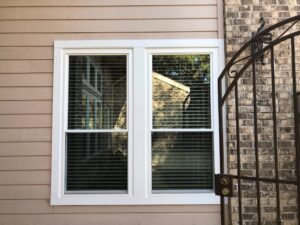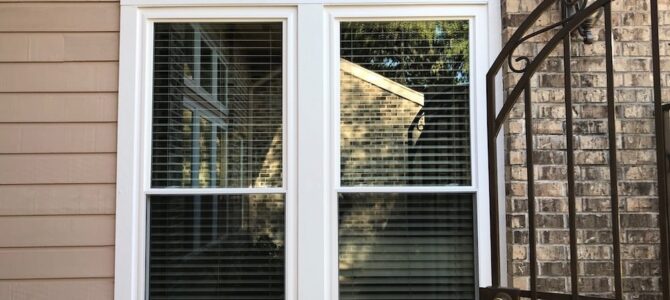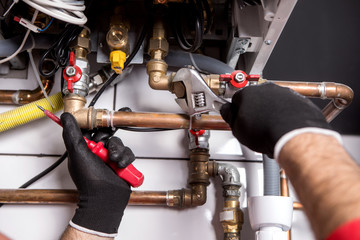New windows can provide more than a refreshed look. They can also offer improved energy efficiency and safety.
Unlike new construction windows, replacement units are designed to fit in existing window openings. This type of installation is generally less expensive and labor-intensive than full-frame windows. For professional expertise, contact Replacement Windows Massachusetts now!
Choosing the right style of window is essential. Double-hungs with divided lights are a good choice for traditional or colonial-style homes.
When it comes to replacement windows, the frame plays an important role in the overall window design and functionality. It determines how well the window will insulate and seal and how much light it allows into a room.
The frame is also one of the most influential factors in determining the cost of replacement windows. Aluminum frames are typically the least expensive, while wood and materials that give the appearance of wood tend to be more expensive.
Another factor that influences the cost of replacement windows is the size and complexity of the window. For example, a larger window will require more material and labor to install than a smaller window. In addition, special features such as tilting sashes, multiple locking points, and specialized trim can increase the price of replacement windows.
The type of frame used in a replacement window also impacts how it will perform over time. For example, an aluminum frame can rust over time and may require more frequent maintenance. Conversely, a wood or fiberglass frame is more durable and will not rust.
Homeowners should also consider whether they want to use insert replacement windows or full-frame replacement windows. An insert window will fit into an existing frame and is a good option for homeowners who are happy with the size, style and operating hardware of their current windows. However, an insert window cannot be enlarged to let in more light or change the shape of the original window opening.
For this reason, full-frame replacement windows are the best choice for homeowners who want to make significant changes to the shape and size of their existing window openings. They also offer better climate tightness and often allow for more glass viewing space.
For more information about the different types of replacement windows available, please contact us at Siding Unlimited. We will be happy to discuss your options and help you choose the perfect window for your home. In addition, we offer a wide variety of remodeling services to meet all of your home improvement needs.
Glass
Glass is the main part of a replacement window that allows light into your home. It also blocks air and can keep you warmer in the winter and cooler in the summer. Glass thickness is important to consider as well, as it determines how much energy your window or door will conserve.
Glass experts can advise you about the type of glass that will best meet your needs. Whether you want clear, frosted, patterned, or tinted glass you can order it with your new window. Some homes require a specific look, which is where customization comes into play. For example, a homeowner in an historic house may need to replace a single pane of glass while still maintaining the original appearance of the windows.
Replacing one or more panes of glass is relatively easy and can be done with a few common tools. The first step is to remove the inside frame molding, then the parting stops at the top and sides of the old window (Photo 4). For double-hung or sliding windows, a pry bar and hammer can help you lift the sash from the bottom. If the sash has cord-pulleys and springs, you may need to remove the latch weights too.
Then, if necessary, you can use a razor blade to cut off any remaining glazing compound. If there is any caulk on the glass, remove it with a utility knife. You can purchase double-face adhesive “setting” tape from your repair specialist to reseal the glass in the frame. This is an important step, as condensation or fog between glass is a sign that the seal has failed.
Before installing the new pane, measure the height and width of the opening, then subtract 1/8 inch from each dimension to leave room for expansion. If the window has a bead molding that holds the sash in place, you can remove it and replace it with a new piece.
After removing the old pane, clean the frame with paint thinner and wire brush, then vacuum or wipe it down. Then, if needed, apply a coat of linseed oil to the rabbet, where the putty will be.
Insulation
If your home is older and you’re thinking about replacing windows, it’s important to factor in upgrading your home’s insulation. The best window insulation is going to keep your home warm in the winter and cool in the summer, saving you money on energy bills. Most homeowners believe that the majority of their home’s heat is lost around the windows and doors, but this is not always the case.
It’s also a good idea to insulate the shim space, which is between the studs and frame of the window. This will add to the overall insulating value of your new or replacement windows and make a big difference in your home’s comfort. In most cases, you will need to remove the casing to access this space and apply caulking or foam rubber weather stripping.
Another way to insulate your windows is to use a plastic film that can be purchased at most hardware stores. It’s easy to apply and will last much longer than adhesive foam strips. It will also not crack or freeze, so it’s a great choice for year-round use.
Alternatively, you can use expanding spray foam that is specifically manufactured for window and door applications. It’s much easier to use than fiberglass batting, and it will fill the gap between your frame and trim, creating a seal that will help to reduce energy loss.
If you’re using this method, it’s important to test the expansion of the foam before applying it. Standard store bought foam will expand too much, which could cause the windows to bind and not function properly or even be damaged. If you’re using this method, you should also ensure that the foam is not touching any of the existing caulking.
It’s also a good idea to make sure the weather is clear before starting this project. Rain or snow will interfere with the process and may cause your caulking to crack or wash away. It’s also better to work in the sunlight so that you can see any potential chips in your paint.
Warranty
Most replacement windows come with a warranty to provide buyers peace of mind. The length of the warranty and what it covers are usually determined by the manufacturer. Most window warranties only cover manufacturer defects, which may include mechanical and aesthetic issues. A homeowner should always read the details carefully. For example, modifying the window in any way can void warranty coverage. A homeowner should also know that a window warranty may not cover certain types of weather damage.
The most common type of warranty is a limited lifetime warranty, which only offers protection for the lifetime of the product. The exact amount of time that a window is covered by this warranty will be clearly outlined in the terms and conditions. The warranty will also state what components of the window are protected and for how long. For example, the manufacturer may guarantee that the vinyl will not blister, peel, or rot.
Another important consideration is whether the manufacturer will cover installation. Many of the manufacturers that produce replacement windows also offer professional installation services. Choosing this option can save the buyer both time and money. The company that produces the windows will typically have professionals available throughout the country, making it possible to install the windows quickly and efficiently. In addition, the manufacturer will typically offer a warranty that protects the buyer against damages caused by faulty installation.
While some companies will offer a lifetime warranty on all of their products, most will only offer it on select lines of windows. For example, Andersen’s 400 Series offers a lifetime warranty on wood and vinyl combinations, while its 500 Series only offers it on all-wood windows.
Regardless of the warranty that is offered, it’s important for homeowners to ask their local dealers for details. They can help determine which type of windows will best suit the home and then recommend a particular style. In addition, the dealer can discuss warranty coverage and other financial options with the customer.
While reading through a replacement window warranty can be an intimidating process, it’s essential to understand what each term and condition means. The most important factor is understanding what a manufacturer really means when they say “lifetime.” For instance, some manufacturers might mean the lifetime of the home, while others might mean the lifetime of the window itself.




 Determining smaller leaks and running toilets is easier in a residence since homeowners use their home plumbing regularly and will notice small issues that could lead to costly dripping and wasted water.
Determining smaller leaks and running toilets is easier in a residence since homeowners use their home plumbing regularly and will notice small issues that could lead to costly dripping and wasted water.